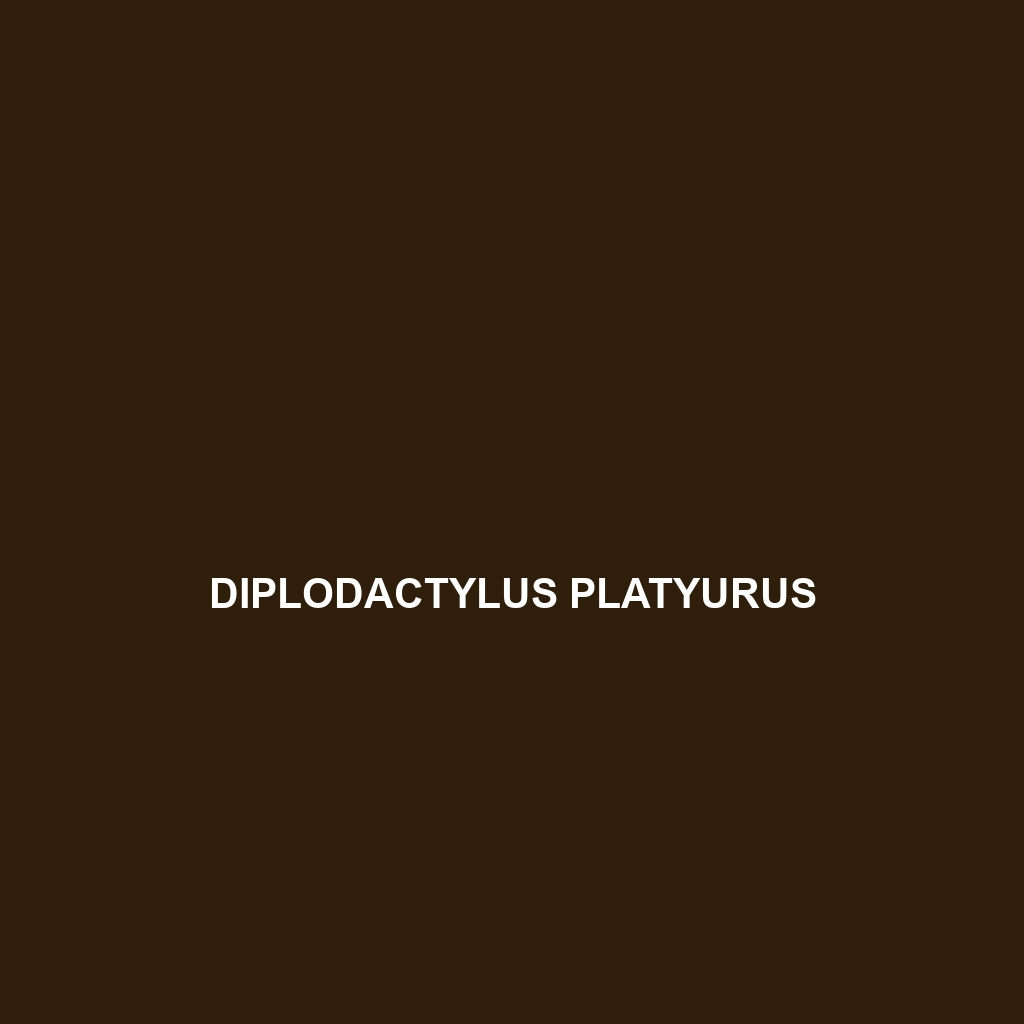Species Description: Diplodactylus platyurus
Common Name: Diplodactylus platyurus
Scientific Name: Diplodactylus platyurus
Habitat
Diplodactylus platyurus, commonly known as the Flat-tailed House Gecko, is primarily found in the dry and arid regions of Australia, particularly in the southern and central parts of the country. These geckos inhabit rocky outcrops, woodlands, and shrublands, often favoring areas with plenty of crevices and hiding spots. They are also seen in urban environments, where they adapt to human habitation, often finding shelter in gardens and around buildings.
Physical Characteristics
This species typically measures about 10 to 20 centimeters in length. The Flat-tailed House Gecko is characterized by its flattened body and wide, flat tail, which serves as a key identification feature. Its coloration ranges from light tan to grayish-brown, often featuring dark bands or spots that provide camouflage against the rocky terrain. The large, expressive eyes and sticky toe pads also stand out, helping the gecko excel at climbing surfaces.
Behavior
Diplodactylus platyurus is primarily nocturnal, displaying heightened activity during the night when it forages for food. These geckos are known for their quick reflexes and ability to escape predators by swiftly climbing trees or hiding in crevices. During the day, they can often be seen basking in the sun on warm rocks. Socially, they exhibit a territorial nature, particularly males who will defend their space against intruding rivals.
Diet
The diet of Diplodactylus platyurus primarily consists of insects and small invertebrates, including crickets, moths, and beetles. They are also known to consume small fruits and nectar, showcasing their opportunistic feeding habits. This diverse diet not only allows them to thrive in various environments but also positions them as important predators in their ecosystem, regulating insect populations.
Reproduction
The breeding season for Diplodactylus platyurus typically occurs during the warmer months. Females lay clutches of 1 to 2 eggs, which are often hidden in sandy or loose substrate. The eggs incubate for about 45 to 60 days, after which hatchlings emerge as miniature versions of adults. Parental care is absent, but the hatchlings are equipped with survival instincts that enable them to fend for themselves immediately after birth.
Conservation Status
Currently, Diplodactylus platyurus is classified as “Least Concern” according to the IUCN Red List. However, habitats are increasingly impacted by urban development and habitat destruction, making it crucial to monitor populations to prevent potential future declines. Conservation efforts focus on habitat protection and awareness of the species’ ecological role.
Interesting Facts
One intriguing fact about Diplodactylus platyurus is its ability to lose its tail as a defense mechanism when threatened, a process known as autotomy. Remarkably, the gecko can regenerate its tail over time, although the new one may differ in appearance. Additionally, these geckos communicate through body language and color changes, which can signal mood or territory.
Role in Ecosystem
Diplodactylus platyurus plays a vital role in its ecosystem as both predator and prey. By controlling insect populations, they contribute to maintaining ecological balance, while they themselves serve as a food source for various birds, reptiles, and small mammals. Their presence indicates a healthy environment, making them important indicators of ecosystem health.
